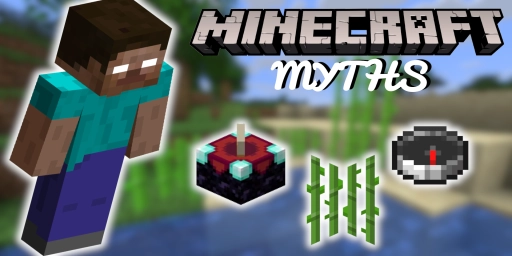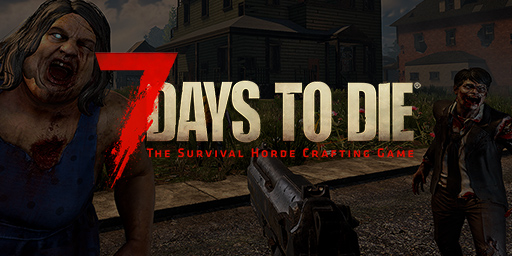When you wander the wasteland in your first few days of 7 Days to Die, you might think, “I’m completely alone.” But that’s not true. Out there are people who won’t exactly shake your hand, but they do bring some humanity and structure to the chaos: the Traders.
Traders are the hubs of the world. They sell, buy, hand out quests, and grant you access to rare items. And now in version 2.0, they play an even bigger role than ever. They’re not just filler — they’re practically a progression barometer.
This article explains everything about Traders, their quirks, quests, and why reputation suddenly makes a real difference. By the end, you won’t see Traders as just a “convenient shop,” but as the key to survival.
Traders in 7 Days to Die 2.0: The five Traders and their strengths
There are five major Traders in the game, each with a distinct personality and slightly different inventory.
- Trader Joel – the “friendly” everyman, with a religious vibe and a broad selection.
- Trader Jen – specializes in medicine and healing, often the best source for bandages, painkillers, and recipes.
- Trader Rekt – rude, but with very strong loot on offer.
- Trader Hugh – military type, focused on armor, weapons, and combat gear.
- Trader Bob – mechanic type, great for vehicle parts, mods, and blueprints.
In 2.0, their inventories are more varied, and the selection changes regularly. Around every Trader is a safe zone: inside the walls, zombies are blocked and weapons are disabled. Perfect for quick breaks or sorting your inventory.
Quests in 7 Days to Die 2.0: Types, instancing, and progression

The biggest change in 2.0 is the revamped quests. They used to be nice extras. Today, they’re almost mandatory if you want real progress.
Quest types at a glance:
- Fetch – Find a package and bring it back. Usually quick.
- Clear – Eliminate all zombies in a specific building. Often tough fights.
- Fetch & Clear – A combination of both. Takes longer, but it pays off.
- Tier progression – The more quests you complete, the higher your Tier (1–6). Higher tiers mean tougher missions and better rewards.
- Special quests – e.g., Buried Supplies (dig up buried chests) or Special Jobs that send you to another Trader.
The best part: quests in 2.0 have more variety. Buildings are instanced for quests (they “reset” at start), so you’ll face fresh challenges repeatedly.
Quest rewards: Dukes, items, XP, and reputation

Quests aren’t just training — they deliver tangible perks:
- Dukes (currency): Every quest earns you cash to reinvest in better gear.
- Items: Weapons, armor, mods, food, meds — very valuable depending on tier and Trader.
- XP: Your character levels faster when you run missions consistently.
- Reputation: Do a lot of work for a Trader and you’ll be treated better.
With higher-tier quests, you gain access to more dangerous (but lucrative) buildings that are often out of reach for other players.
Reputation with Traders: Prices, exclusive items, and bonus quests
In version 2.0, reputation finally matters. The more you do for a Trader, the more they trust you — and that trust pays off:
- Better prices: Higher reputation = cheaper buying and better sell prices.
- Exclusive items: Access to rare weapons, mods, or recipes.
- Bonus quests: Special jobs others never see.
- Lore bits: More reputation reveals more about each Trader’s personality and backstory.
Bottom line: you’re not just a “customer” — you become an ally if you prove yourself.
Strategies for the first week: safe quests and Blood Moon planning
Especially as a beginner, it’s important to play quests smart.
- Start with Fetch quests. They’re simple, rewarding, and lower risk.
- Clear quests only during the day. Building zombies are ruthless at night.
- Loot everything twice. Quests reset a building at activation — loot first, then start the quest and loot again.
- Horde planning. Don’t take on long quests on day 7 — be back at your base in time.
Trader routes and opening hours: trade and sell efficiently

One Trader is good — several are better. Each has different specialties and offers. If you’re mobile (mini bike or motorcycle), run Trader routes:
- Traders have opening hours and will kick you out when they close.
- Plan a loop to hit 2–3 Traders in a single day.
- Use the chance to sell excess loot.
- Watch for blueprints — recipes for ammo or mods are essential.
Bonus: Traders reset their inventory regularly (e.g., every 3 days). With a set routine, you won’t miss deals.
Multiplayer tips: complete quests efficiently as a team
In multiplayer, quests really shine:
- Every player can accept the same quest — everyone benefits.
- Enemies scale, but the loot scales too.
- Split roles: one kites, one loots, one covers.
On a dedicated 7 Days to Die server this is especially handy because everyone’s progress stays in sync. Nobody falls behind — everyone benefits from quest progress.
Trader bases as safe zones: protection, selling, and quest hubs
Every Trader compound is essentially a small fortress. High walls, iron gates, safe zones. You can’t settle there permanently, but they’re great waypoints:
- Protection during loot runs: If you barely make it out alive, flee into a Trader zone — zombies won’t follow you inside.
- Sell point: Dump everything you don’t need in the shop.
- Quest hub: Especially convenient when you’re chaining multiple quests in one area.
Some players also use Trader bases as temporary Blood Moon shelters. Officially that isn’t supported — creative players still find ways.
Use Trader specializations deliberately: medicine, ammo, vehicles
Each Trader has strengths — use them deliberately.
- Need more meds? Visit Jen.
- Low on ammo? Rekt or Hugh deliver.
- Vehicle parts? Bob is your guy.
- A bit of everything? Joel often has a mixed stock.
This helps you quickly cover weaknesses in your build or team.
Trader questline: From Tier 1 to Tier 6 with rising difficulty
With every completed quest, you climb the Trader ladder. At a certain point, your Trader will send you to another outpost (“Special Job”), expanding your map and opening new opportunities.
- Tiers 1–2: Starter quests, simple buildings, quick rewards.
- Tiers 3–4: More demanding buildings with more zombies and better loot.
- Tier 5: Large POIs (e.g., factories, hospitals). Tough nuts, but worth it.
- Tier 6: Endgame content with the hardest enemies and best rewards.
The questline is a second guiding thread alongside the Blood Moon system. It gives you clear goals and steady rewards — ideal in an open survival world.
Endgame in 7 Days to Die 2.0: Why Traders remain essential
Many games make Traders irrelevant in the endgame — not in 7 Days to Die 2.0.
- Rare blueprints you’ll hardly find on your own.
- Ammo and explosives you’ll desperately need late game.
- Quests still deliver tons of XP and Dukes at high levels.
Even with a perfect base, vehicles, and top-tier weapons, Traders remain your constant companion.
Reputation in detail: tangible benefits and thresholds
To make it concrete:
- At low reputation you’ll pay markups (around +20%) for ammo, for example.
- At mid reputation, prices drop; you’ll also see small perks like a free bandage.
- At high reputation, the good stuff unlocks — blueprints, special mods, or exclusive quests.
Building reputation takes time — but if you consistently work for a Trader, it pays off enormously in the long run.
Conclusion: Traders, quests, and reputation are your lifeline
In version 2.0, Traders and quests finally have the weight they deserve. They’re not just small side stops, but a full progression track. With reputation, better quests, and worthwhile rewards, they become the second heartbeat alongside the Blood Moon system.
Whether solo or with friends: a 7 Days to Die server gives you the freedom to get the most out of Traders. You’ll build faster, loot better, and survive longer.
More interesting articles
7 Days to Die 2.0: Secure Base-Building Guide
7 Days to Die 2.0: Beginner’s guide to your first hours
7 Days to Die Endgame Guide: Gear, Weapons & Builds



